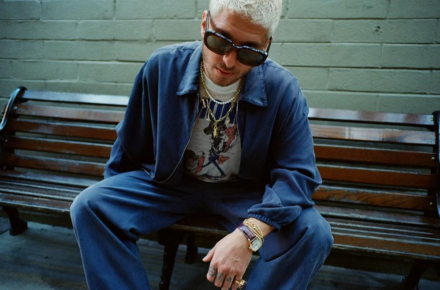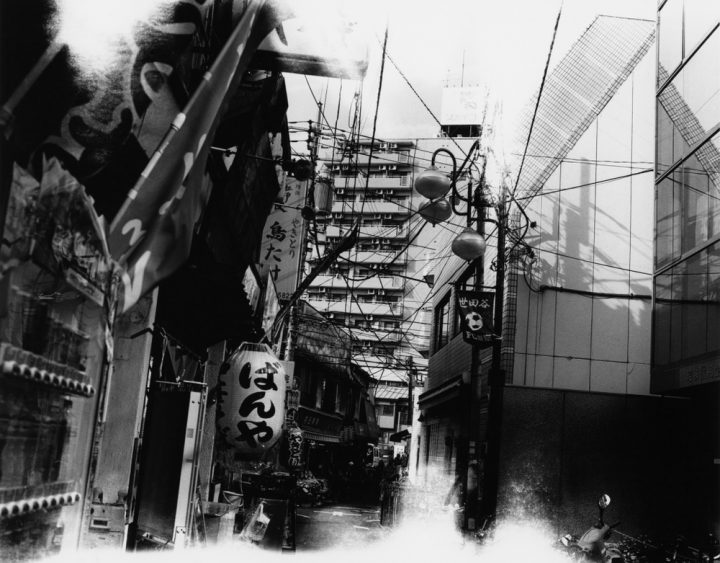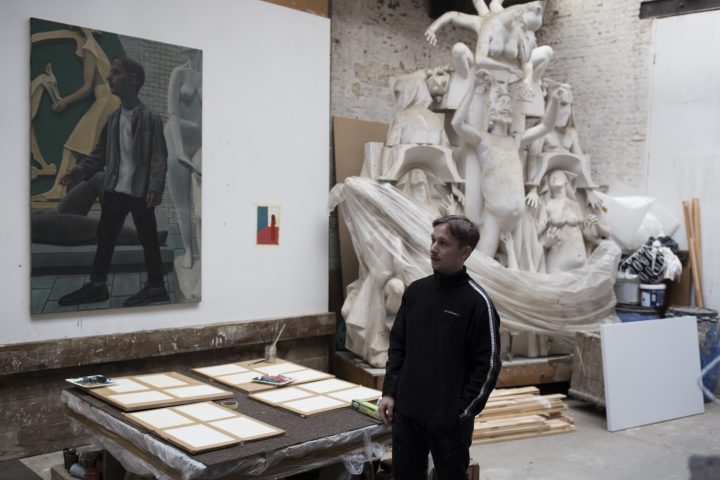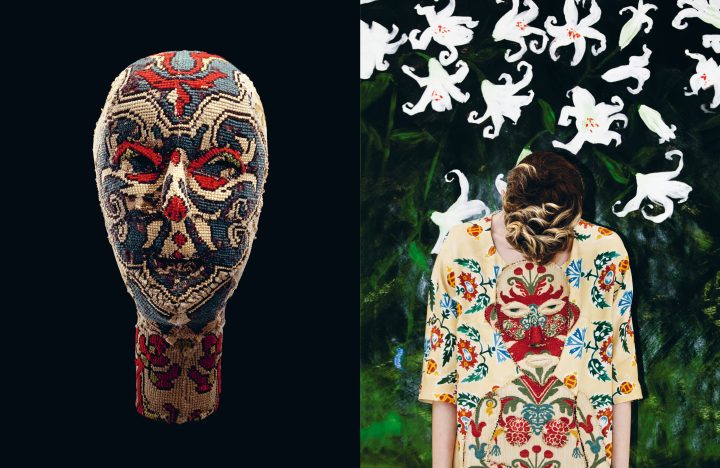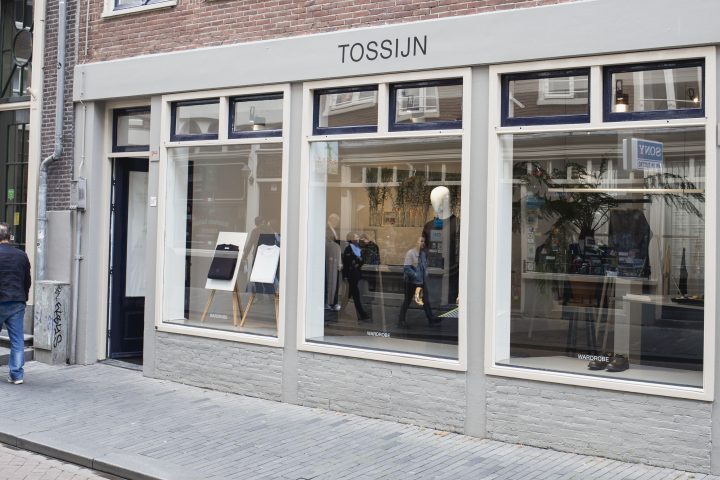A NewWerktheater Edition

As one of the last features of this year we wanted to share this special project we did at NewWerktheater. Parallel to our collaboration of last month with Lennard Kok, the Fallen Bird, we’ve been busy in our other role at NewWerktheater and …,staat to work on another collaboration we’re extremely excited about; Jupe by Jackie x …,staat.
The idea behind NewWerktheater Editions is to explore disciplines beyond those that are generally our own. To create great things with great people. To see what we can get from the ground and where we could end up if we walk a road unknown. 'Aesthetic Memories' exemplifies precisely this. This body of works took us somewhere we never could have imagined beforehand. We were drawn to the mastery required for this ancient technique. First, we fell in love with the craft, then we met the person behind it and fell in love all over again. Meeting Jackie was one of those instant clicks. You know the type.
When we started discussing designs, deciding on form, translating our inspiration for color, we soon found ourselves entering the territory we set out to find – challenging tradition. Hand-embroidery is traditionally decorative, traditionally representational. But, what if we worked with abstractions? What if we clashed the intricacy of the handwork with geometric elements? [ Continue reading ]
Defining a new dimension of light

Chris Cheung, creative director of the Hong Kong-based interdisciplinary creative studio XEX, reached out to us to share his latest art installation called 'Prismverse'. An immersive audiovisual installation to define a new dimension of light. As the title of the installation unveils it capture two core ideas; A prism as the medium that translates light on one hand, and a verse as the multi-timespace dimension. [ Continue reading ]
A new book featuring work of Japanese master Osamu Kanemura by Pierre von Kleist editions

Lisbon-based publisher Pierre von Kleist is one of the creative platforms that we have had a love affair with from the moment when we first discovered their incredible publications. They say love fades over time, but Pierre von Kleist has consistently published top notch projects during the few years that we've been following them, making it safe to say that we feel no different than years ago. Their latest publication, that has been released last week, is named 'Concrete Octopus' and takes off where renown Japanese photographer Osamu Kanemura´s 2002 acclaimed 'Spider's Strategy' left. For the first time, Pierre von Kleist teamed up with Tokyo-based publisher Osiris to create the beautiful new publication with new moody black and white work done between 2011 and 2013. As Kanemura's familiar dark film noir alike signature runs through every page of the book, it fits perfectly that film critic Chris Fujiwara was given the chance to write the accompanying text included in the book.
It would be strange and misleading, though obviously not wholly inaccurate, to call these photographs “images of the Japan of the present time.” Though they might perhaps have much to say to the social historian, their documentary function is circumscribed by the interest in exploring a visual universe too disunited and incomplete to be recognizable as a cultural or historical form. In these images, the world presents itself with great purity and without provocation or seduction, as though poised in the interval before the repetition of an already forgotten catastrophe. We can't stop gazing at these new mysterious set of images, which underlines both the immaculate eye of Kanemura and the fact that next to being a publisher, Pierre von Kleist has transformed into a label of utmost quality, with everything they put out being deeply inspiring. [ Continue reading ]
The mysterious world of young Belgian painter Bendt Eyckermans

The Lange Leemstraat is one of Antwerp’s longer continuous streets. It starts on the edge of the city center and cuts straight through the Klein-Antwerpen area, which is popularly better known as (a significant part of) the Jewish neighborhood. The street slices the segment of the Belgian city between the Mechelsesteenweg, the Van Eycklei and the Belgiëlei, in two halfs — together forming a perfect triangle when seen on a map. Most of the tall but narrow houses in the street are at least four stories high and an overall multiethnic feel prevails next to the omnipresence of the orthodox Jewish community; when entering the street one is instantly struck by a metropolitan vibe. It feels like a miniature Brooklyn in the heart of Antwerp. For me, it forms one of the many (hidden) qualities of the city with a remarkable cultural diversity and unique urban structure that was only partly transformed for the modern age.
When continuing along the street from the center, somewhere halfway at the heart of Klein-Antwerpen, the impressive 'Résidence Isabelle' arises. The street is too narrow to actually see it before being in its proximity. All of a sudden it’s just there, forcing the street into an Y-crossing. The apartment building is the kind of beautiful architectural dissonance one finds throughout Antwerp. It doesn't match with its surrounding, but fits beautifully. In today’s digitally globalized world the concept (or illusion?) of visibility is more dominant and demanding then ever. In my eyes, an organically grown, bricolaged, environment like the Belgian harbor city still cultivates the opposite: a strong sensibility for the unknown and the mysterious through its partly chaotic, partly impractical, but always deeply intriguing urban DNA.
When somewhere last year, we discovered the work of a young Antwerp-based painter named Bendt Eyckermans, a very similar feeling of mystery hit. Who was behind these striking paintings, reminding of some of my favorite magic-realistic artists, yet with an incredible contemporary perspective and subject matter? After connecting through Instagram (bless the digital age too!), Bendt agreed to meet in his studio, which to my surprise is located right there in my favorite neighborhood of the city. [ Continue reading ]
by Walter van Beirendonck at Wereldmuseum Rotterdam

Last Thursday, we were finally able to see the extraordinary 'POWERMASK' exhibition at the Wereldmuseum Rotterdam. Curated by none other than Walter van Beirendonck, sided by art historian Alexandra van Dongen and anthropologist Sonja Wijs, it had been on our wish list from September 1st when it opened for the public. For 'POWERMASK', the museum with a focus on ethnology gave the legendary Antwerp fashion designer a free hand to present his own unique, multi-faceted vision of the phenomenon of masks. The result is a stunning colorful display, carrying the designer's unique signature all-over, combining ethnic masks and ethnological documents with modern Western fashion, art, photography and culture — featuring the work of impressive names like Christophe Coppens, Diane Arbus, Jean-Michel Basquiat, Louise Bourgeois, Brian Kenny, Martin Margiela and Walter's own Dirk Van Saene.
The exhibition is both a feast for the senses and proof how relevant van Beirendonck's vision remains to this very day. He might have found a more niche position as a fashion designer (and a more invisible role as Head of Fashion at the Royal Academy of Fine Arts Antwerp), the exhibition, although much smaller, feels like an echo of his iconic Antwerp exhibition 'Landed/Geland' from 2001, which at that time set a new standard for fashion exhibition in terms of presenting pieces within its societal context, but still succeeding to convince aesthetically and therewith speaking to spectators in more than one way. With 'POWERMASK' van Beirendonck underlines, now more than ever, that we need powerful artistic voices like his to remind us of the unique beauty of all cultures on this planet and how exchange between them is what makes life interesting.
When in Rotterdam before the 7th of January don't miss out on this incredible exhibition! [ Continue reading ]
Another x Lennard Kok

From the moment we worked with Utrecht-based illustrator Lennard Kok for the rebrand of Travelteq in 2015, the ambition was set to collaborate again. Eventually it took another year to really sit down and discuss it. At that point Lennard confessed he wanted to explore new terrain in his artistic practice and shared his ambition to reach beyond illustration. Through our consensual admiration for certain inspirational artist editions, we set the bar at next level and eventually came to the conclusion this would mean we needed to take Lennard's clear lined flat signature and find a way to translate it into the sculptural. More so, as paradigms continue to shift under the pressures of digital globalization with significant fractures ahead of us that seem to usher in a new era, we searched for a statement that (at least in our heads) would mark the specific moment of creation.
In the dialogue that followed, we kept returning to a series of crashed vehicles Lennard had made earlier that year. When we finally started seeing the airplane out of that series as the ultimate symbol, we knew we had found our subject that represented everything we aimed for. From that moment Michiel Verweij joined the project to bring Lennard's vision to life in 3D and soon Suzan Becking formed the last element of the equation as we wanted to materialize the sculpture into the perfect paradox: a crashing plane made out of porcelain. The final quest for perfection started, and eventually took a little longer than we hoped, but Friday the 13th, at last, graphite on paper was transformed into a black porcelain sculpture which we named 'Fallen Bird'.
We are extremely proud to present the result of our shared endeavor and are very thankful for this inspirational experience alongside Lennard, Michiel and Suzan. Now it's time for this 'Fallen Bird' to find its way all over the world again... We are ready for the next one (stay tuned)! [ Continue reading ]
Make it simple.

There are few places left in Amsterdam’s most central areas that have enough character to weather the ever-growing storm of tourists and people that particularly cater to them. At times, especially in the summer, the city feels like an urban amusement park. With no end of this development in sight, the once authentic center is slowly turning into an empty shell of its former self. Fortunately, there are still some spots that offer some kind of cultural experience (let’s hope it stays that way!), with the Zeedijk being one of our favorites. Located in the small but dense Chinese quarter of the Dutch capital, the street is famous for its restaurants and supermarkets, but also for being the original gateway of heroine into the country in the late sixties — during the last few years it has also been embraced by a growing number of brands, in search of a real environment for their stores.
Among them are streetwear household names like Amsterdam’s own giant Patta, the Comme des Garçons BLACK store, and most recently Stüssy also opened its doors in the street. Next to, for instance, newcomers like Bonne Suits, who shares a space with SMIB and The New Originals. Although we appreciate these streetwear brands, for us the appeal of the street was taken to the next level by another recent addition, as in April our friend Koen Tossijn also found his way to the infamous Zeedijk and opened his first brick and mortar store ever for his brand TOSSIJN — introducing a well needed touch of understated luxury and a toned down color palette, next to all the logos and graphics at his neighbors. [ Continue reading ]






